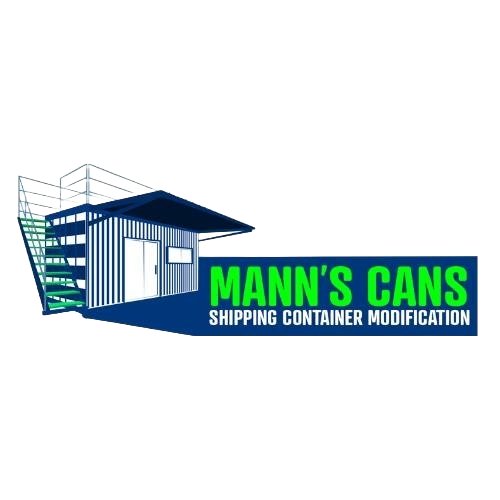Are Container Homes Environmentally Friendly?
- Mann's Cans

- 5 days ago
- 4 min read
As more homeowners look for sustainable and affordable housing options, container homes have become a growing trend across the United States. These homes, made from repurposed shipping containers, are not only stylish and efficient but also praised for their potential environmental benefits. But are container homes truly eco-friendly, or is it just a design trend?
In this guide, we’ll explore how shipping container homes can reduce waste, save energy, and promote sustainability for homeowners in Harrison City, PA, and nearby areas.

What Makes Container Homes Eco-Friendly
Shipping containers were originally designed for global transport, but millions are left unused in ports every year. By repurposing them for housing, builders reduce waste and give these sturdy steel structures a second life. This practice alone contributes to a more sustainable construction process by cutting down on the need for new materials.
Here’s how container homes promote environmental responsibility.
1. Reducing Construction Waste
Traditional construction produces a large amount of waste, from wood scraps to concrete debris. Container homes minimize this problem because the main structure already exists. Each 20-foot or 40-foot container used eliminates thousands of pounds of steel that might otherwise end up discarded or melted down.
Reusing containers means fewer materials are needed, which reduces the carbon footprint associated with producing new construction supplies.
2. Lower Energy and Material Usage
Since a shipping container provides a ready-made structure, the building process requires less material overall. The framework, flooring, and exterior walls are already in place, so fewer resources are used for framing and foundation work. This can significantly reduce energy consumption and emissions during construction.
When combined with energy-efficient insulation, solar panels, and sustainable materials, container homes can perform as well or better than traditional homes in terms of energy use.
3. Smaller Footprint, Lower Impact
Container homes are often smaller than conventional houses, which naturally means they use less land, fewer materials, and less energy to heat or cool. Many homeowners in Harrison City, PA, are embracing the tiny home movement, not just for affordability but for the reduced environmental impact. A smaller space encourages minimalism and lower resource consumption over time.
4. Longevity and Durability
Containers are made from COR-TEN weathering steel, a material built to last decades under harsh conditions. With proper maintenance and insulation, container homes can last as long as traditional houses. Their strength also makes them resistant to mold, termites, and fire, which reduces the need for harmful pesticides or frequent repairs.
5. Adaptability and Reuse
Another environmental advantage of container homes is their ability to be moved, repurposed, or expanded. Instead of demolishing a structure to rebuild, containers can be relocated or reconfigured. This flexibility prevents waste and makes them ideal for long-term sustainable living.
Mann’s Cans provides durable, one-trip containers that are perfect for building eco-friendly homes and offices in and around Harrison City. Each container is inspected and prepared to ensure quality and longevity for your project.
How to Make Container Homes Even Greener
While container homes already have a smaller environmental footprint, there are several ways to make them even more sustainable.
Choose the Right Insulation
Proper insulation prevents heat loss in winter and keeps interiors cool in summer. Using spray foam insulation or recycled insulation materials can improve energy efficiency and reduce long-term energy costs.
Install Solar Panels
Solar energy is one of the best ways to make your container home more self-sufficient. Panels can be installed on the container roof, reducing dependency on non-renewable energy sources.
Use Sustainable Materials
Opt for reclaimed wood, bamboo, or recycled metal for interior finishes. These materials are renewable and often have a lower environmental impact compared to traditional options.
Design for Natural Ventilation and Light
Strategically placed windows, skylights, and vents can reduce the need for artificial lighting and air conditioning. Natural airflow helps maintain indoor comfort while lowering energy usage.
The Environmental Challenges of Container Homes
While container homes are often eco-friendly, there are some considerations to keep in mind. Containers used for international shipping may contain chemical coatings or treated floors to resist corrosion and pests. Before repurposing them, these materials need to be removed or properly sealed to ensure a safe living environment.
Additionally, cutting steel to create windows and doors requires energy and professional welding. However, these impacts are still typically lower than those of traditional construction.
Working with experienced builders, like the team at Mann’s Cans, ensures that containers are properly modified and environmentally safe before use.
The Bottom Line
Yes, container homes can be environmentally friendly, especially when built thoughtfully with sustainability in mind. By reusing existing materials, conserving energy, and promoting smaller living spaces, container homes offer a responsible alternative to conventional construction.
For homeowners in Harrison City, PA, looking to reduce their environmental impact while enjoying a modern and cost-effective lifestyle, container homes are a practical and eco-conscious choice.
Let’s Build a Sustainable Future Together
At Mann’s Cans, we believe in creating spaces that are strong, efficient, and environmentally responsible. Our one-trip containers are built to last and are perfect for eco-friendly home projects, offices, and modular buildings.
Call 724-790-5040 today or fill out our online form to request a custom quote. Let’s work together to design a sustainable container home that helps protect both your investment and the planet.





Comments